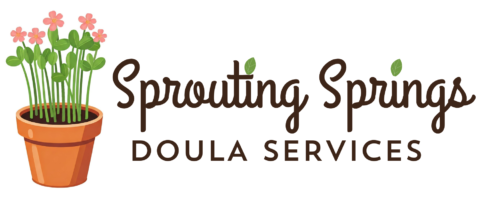
Breastfeeding is a natural process, but it is not without a need for education and practice. Many parents wonder about what is normal, how to tell if a baby is eating enough, and how to deal with the physical changes of lactation.
When beginning to breastfeed, tenderness and breast engorgement are normal. However, cracked, bleeding, bruised, or flattened nipples are not. Breast engorgement peaks around day 5, within the first few days following the transition to mature milk, and improves as supply stabilizes, about 2 weeks after birth. The first step to establishing a healthy supply is ensuring that the baby is latching to the breast effectively.
What is a good latch?
| Signs of a good latch | Signs of a bad latch |
| Mouth wide over areola. Lips turned out. Chin resting against breast. Hear a regular swallow (once transitioned to mature milk). | Suckling on the nipple only. Lips curled inward. Nipple damage or pain beyond initial tenderness |
The following diagram is courtesy of Women, Infants, and Children Breastfeeding Support “Steps and Signs of a Good Latch”
Is the baby eating enough?
To understand if the baby is eating enough you will be looking for a good latch, a normal weight gain, and a normal number of wet and bowel movement diapers for the day of life (see chart). After birth babies often lose weight for the first 4 days of life, then should gain back what they lost by day 14 of life and continue a steady weight gain.
According to the CDC guidelines for newborn feeding, caregivers should expect:
| Age of the Baby | Minimum # of wet diapers | Minimum # of bowel movement diapers |
| Day 1 | 1 | 1 |
| Day 2 | 2 | 3 |
| Day 3 | 5 | 3 |
| Day 4 | 6 | 3 |
| Day 5 | 6 | 3 |
Contact your baby’s medical provider if the baby:
- Feeds less than 8 times a day
- Is struggling to stay latched
- Is fussy after feeding
- Is continuing to lose weight after day 5
- Has less than 3 bowel movements and 6 wet diapers per day by day 5
- Has yellowish skin
What is breast engorgement and how do I take care of myself?
Breast engorgement is when one’s breasts feel full, firm, or sore as they fill with milk, blood, and other fluids. This is normal when transitioning to mature milk or after going longer between expressing. To relieve engorgement, one will want to either feed the baby as they need or express a minimal amount for comfort. Pumping more than is needed can lead to an over supply and continued engorgement.
To increase ones comfort:
- Take ibuprofen and acetaminophen, as directed on packaging
- Wear a supportive bra
- Breastfeeding in a side-lying position
- Apply warm compress for 10 minutes before nursing
- Apply cold pack for 10-15 minutes after nursing
Contact your medical provider if you:
- Have persistent or worsening symptoms
- Symptoms that don’t respond to treatment
- Notice changes in just one breast
Who do I turn to for breastfeeding support?
Breastfeeding support comes in many forms: from friends, family, and volunteers, to educators, doulas, and healthcare professionals. Both birth and postpartum doulas, like myself, can help offer education on what to expect as well as a nurturing supportive presence. To find a counselor or learn about the scope of practice for the variety of roles in this field, visit the website for The Academy of Lactation Policy and Practice. For free peer support from someone with breastfeeding experience, visit the website for Breastfeeding USA. To find a healthcare professional who specializes in clinical management of breastfeeding visit the website for the International Board Certified Lactation Consultant Association. Links for all resources can be found below.
More information can be found at:
Breastfeeding: Latch: A Handbook for Breastfeeding with Confidence at Every Stage by Robin Kaplan M.Ed., IBCLC
Establishing a good latch: https://wicbreastfeeding.fns.usda.gov/steps-and-signs-good-latch.
Establishing a good latch: https://www.cdc.gov/nutrition/infantandtoddlernutrition/breastfeeding/newborn-breastfeeding-basics.html
Applying Heat and Cold for Breast Engorgement: https://www.beaumont.org/conditions/breastfeeding-engorgement
Breast engorgement: https://my.clevelandclinic.org/health/diseases/breast-engorgement.
Breast engorgement: https://www.mayoclinic.org/healthy-lifestyle/labor-and-delivery/in-depth/postpartum-care/art-20047233
The Academy of Lactation Policy and Practice: https://www.alpp.org/
Breastfeeding USA: https://breastfeedingusa.org/find-a-breastfeeding-counselor/
International Board Certified Lactation Consultant Association: https://ilca.org/
